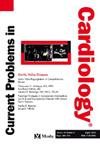Targeted antihypertensive therapy after hypertensive pregnancy: Lactation-safe choices, treatment thresholds, and outcomes (2015–2025)
IF 3.3
3区 医学
Q2 CARDIAC & CARDIOVASCULAR SYSTEMS
引用次数: 0
Abstract
Background
Postpartum hypertension is a leading driver of emergency visits and readmissions within 6 weeks of delivery, yet optimal therapy must balance BP control with lactation safety.
Objective
To synthesize contemporary evidence (Jan 2015–Aug 2025) on postpartum antihypertensives with emphasis on breastfeeding compatibility, treatment thresholds/targets, and maternal–infant outcomes. Data Sources: PubMed/MEDLINE, Embase, Scopus, Web of Science, Cochrane, ClinicalTrials.gov/ICTRP, and guideline repositories (AHA/ACOG/NICE), plus LactMed and UK Specialist Pharmacy Service (SPS). Eligibility: RCTs, comparative cohorts/case–control studies, and ≥10-patient case series reporting postpartum outcomes or lactation data.
Results
First-line postpartum agents compatible with breastfeeding in term, healthy infants are dihydropyridine calcium-channel blockers (nifedipine, amlodipine), ACE inhibitors (enalapril), and labetalol. Multiple large cohorts associate nifedipine (at discharge) with lower hypertension-related readmissions than labetalol. Small RCTs show signals for enalapril-related cardiac reverse remodeling and physician-optimized self-monitoring improving 9-month BP and cardiac structure. Severe BP ≥160/110 mmHg warrants urgent treatment (IV labetalol or hydralazine; oral IR nifedipine if no IV), while persistent ≥150/100 mmHg merits/continues oral therapy titrated toward ≤140/90 mmHg in clinic (≈≤135/85 mmHg at home). Early review within 3–10 days (≤72 h after severe disease) and remote/home BP programs reduce unplanned care.
Conclusions
For lactating patients, nifedipine ER/amlodipine, enalapril, and labetalol are appropriate first-line choices; real-world data favor nifedipine for lowering readmissions. Scaling home BP monitoring with early follow-up improves outcomes. Large pragmatic RCTs comparing step-care strategies and tracking infant outcomes remain a priority.
高血压妊娠后靶向降压治疗:哺乳期安全选择、治疗阈值和结局(2015-2025)
背景:产后高血压是分娩6周内急诊和再入院的主要原因,但最佳治疗必须平衡血压控制和哺乳安全。目的:综合当代(2015年1月- 2025年8月)关于产后降压的证据,重点关注母乳喂养适应性、治疗阈值/目标和母婴结局。数据来源:PubMed/MEDLINE, Embase, Scopus, Web of Science, Cochrane, ClinicalTrials.gov/ICTRP,指南库(AHA/ACOG/NICE),以及LactMed和UK Specialist Pharmacy Service (SPS)。入选条件:随机对照试验、比较队列/病例对照研究,以及≥10例报告产后结局或哺乳期数据的病例系列。结果:适合于足月龄健康婴儿母乳喂养的一线产后药物为二氢吡啶类钙通道阻滞剂(硝苯地平、氨氯地平)、ACE抑制剂(依那普利)和拉贝他洛尔。多个大型队列将硝苯地平(出院时)与拉贝他洛尔相比,高血压相关的再入院率更低。小型随机对照试验显示依那普利相关的心脏反向重构和医生优化的自我监测改善了9个月血压和心脏结构。严重的血压≥160/110 mmHg需要紧急治疗(静脉注射拉贝他洛尔或肼嗪,如果没有静脉注射则口服硝苯地平),而持续≥150/100 mmHg需要/继续口服治疗,在临床滴定到≤140/90 mmHg(≈≤135/85 mmHg在家中)。早期复查3-10天(严重疾病发生后≤72小时)和远程/家庭BP方案可减少计划外护理。结论:对于哺乳期患者,硝苯地平ER/氨氯地平、依那普利、拉贝他洛尔是合适的一线选择;实际数据支持硝苯地平降低再入院率。家庭血压监测与早期随访可改善预后。比较继步护理策略和跟踪婴儿结果的大型实用随机对照试验仍然是优先考虑的。
本文章由计算机程序翻译,如有差异,请以英文原文为准。
求助全文
约1分钟内获得全文
求助全文
来源期刊

Current Problems in Cardiology
医学-心血管系统
CiteScore
4.80
自引率
2.40%
发文量
392
审稿时长
6 days
期刊介绍:
Under the editorial leadership of noted cardiologist Dr. Hector O. Ventura, Current Problems in Cardiology provides focused, comprehensive coverage of important clinical topics in cardiology. Each monthly issues, addresses a selected clinical problem or condition, including pathophysiology, invasive and noninvasive diagnosis, drug therapy, surgical management, and rehabilitation; or explores the clinical applications of a diagnostic modality or a particular category of drugs. Critical commentary from the distinguished editorial board accompanies each monograph, providing readers with additional insights. An extensive bibliography in each issue saves hours of library research.
 求助内容:
求助内容: 应助结果提醒方式:
应助结果提醒方式:


